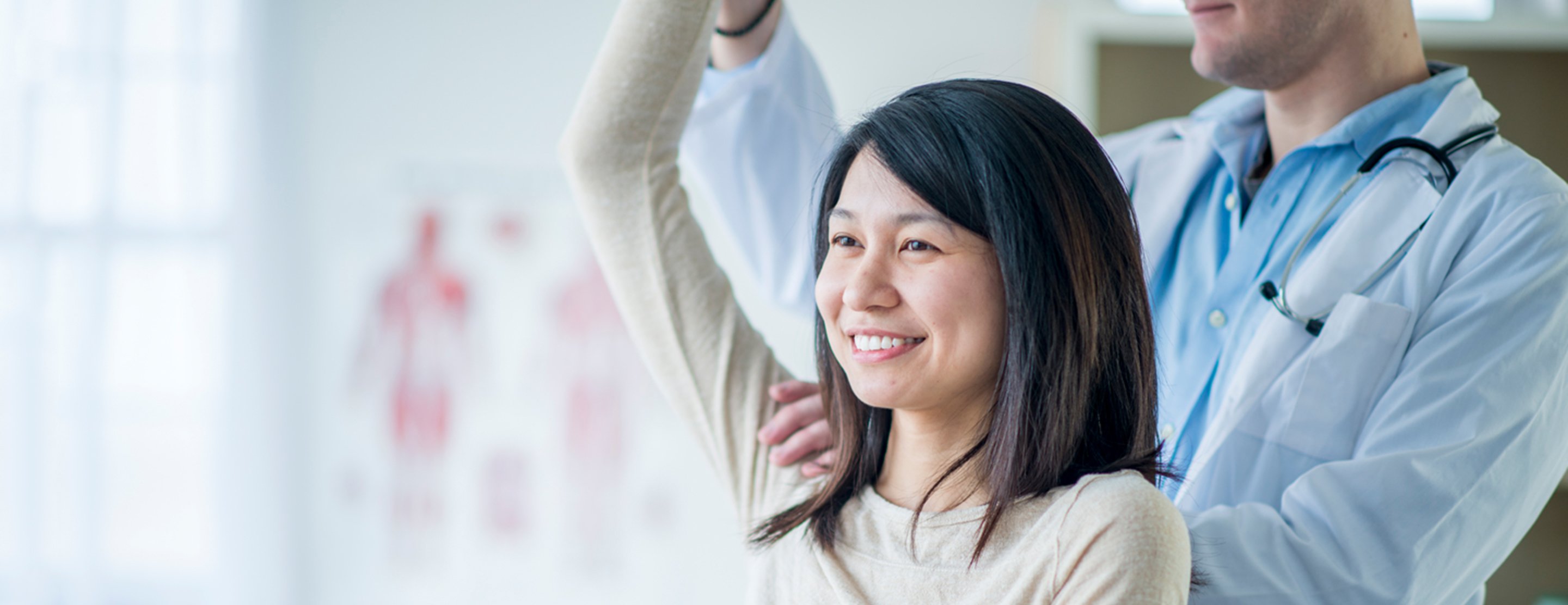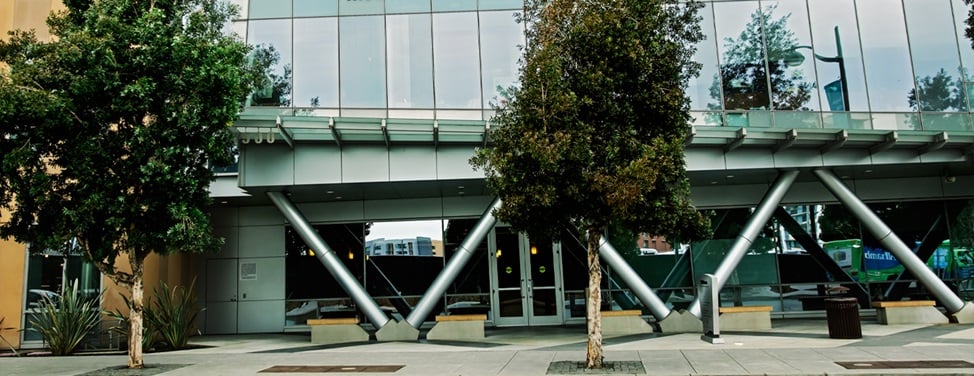
Recovering from Shoulder Replacement Surgery
Feeling a little anxious about shoulder replacement surgery is normal, but knowing what to expect can help. Here's some information about the immediate and long-term post-op period.
After surgery, we'll move you into the recovery room, where you'll stay for approximately two hours. You'll be monitored as you wake from anesthesia until you're ready to be taken to your hospital room. Your operated arm will be numb from the nerve block, which can provide effective pain relief into the following day. Another side effect of the nerve block is that you won't be able to move your fingers or wrist on the operated arm. You'll most likely be able to go home the day after your surgery.
You'll use a shoulder sling for six weeks. The sling is important for protecting the replaced joint and, in patients with an anatomic shoulder replacement, for protecting the rotator cuff repair. We recommend wearing it whenever you're in public or moving around, but you may loosen it during relatively motionless activities, such as reading, watching television or working at a desk. You may use your arm to perform normal daily activities, such as eating, writing or shaving, but don't lift objects or make sudden moves, such as quickly reaching for something, until you're instructed that it's safe to do so.
Possible postsurgical complications
Total shoulder replacement is a very successful operation, with 90% of implants free of complications 10 years after surgery. Many patients end up with well-functioning shoulders and are able to return to the activities of daily living as well as low-impact sports without pain.
Surgical complications, such as infection or bleeding, can occur but are rare. There is a risk of the replaced shoulder dislocating, especially shortly after surgery if you fall or aren't using the shoulder sling. Occasionally, some patients have persistent weakness, stiffness or pain.
Physical therapy
After a shoulder replacement, physical therapy is essential. Usually, the first day after surgery, a physical therapist will teach you specific exercises that will prevent your elbow and shoulder from getting stiff and help you regain full range of motion. Performing the exercises will be difficult at first but will get easier over time. Before you leave the hospital, a physical therapist will make sure you're doing them properly.
Patients with an anatomic shoulder replacement will start a structured physical therapy program one to two weeks after surgery. For the first six weeks, this will focus on passive range-of-motion exercises. For a reverse shoulder replacement, patients start physical therapy six weeks after surgery, tapering use of the sling and beginning with work on regaining active motion. Patients generally start working on shoulder strengthening three months after surgery and can return to most activities involving the shoulder about six months after surgery.
After exercise, you may experience swelling and bruising of your hand and arm. The best treatment for this is to bend and straighten your elbow frequently and to periodically make a fist to boost circulation.
Care at home
Most patients are discharged from the hospital the day after surgery. To ensure you can go home safely, we want to see that you are medically stable and your pain is controlled. Once you're home, be sure to follow your orthopedic surgeon's instructions carefully, especially during the first few weeks.
Medications
You'll receive prescriptions for a few types of pain medication. We've found that using drugs that work in different ways can provide the best pain control without patients needing high doses of any single medication. The timing and dosing of your medications will be discussed with you before you leave the hospital.
Caring for your incision
You'll have stitches along your incision on the front of your shoulder. These will be removed at your first follow-up appointment, one to two weeks post-op. Call your surgeon immediately if your incision swells, drains, turns red or becomes painful, or if you develop a temperature over 101°F.
Be careful not to let the dressing or bandage covering your incision get wet or dirty; moisture increases the risk of infection. Try to simply leave the dressing alone until your first post-op appointment, although you can carefully change it yourself, if necessary. After the stitches are removed and your doctor says it's fine, you can take a shower, letting water run over the wound. But don't submerge the area in a bathtub or swimming pool until the incision has completely healed. Pat the wound dry after showering.
Follow-up
Your first two appointments will be scheduled at one to two weeks after surgery and six weeks after surgery. At the first appointment, in addition to stitch removal, we'll take an X-ray of your shoulder.
During the first year following your surgery, you'll see your orthopedic surgeon for routine follow-up visits, generally at three months, six months and 12 months. After that, you'll return for annual visits to assess the status and functionality of your implant.
UCSF Health medical specialists have reviewed this information. It is for educational purposes only and is not intended to replace the advice of your doctor or other health care provider. We encourage you to discuss any questions or concerns you may have with your provider.
Frequently asked questions
- When can I drive after surgery?
For the first six weeks, you'll be in a sling and unable to drive. You can get behind the wheel once you're out of the sling and have appropriate control for driving safely.
- When can I return to my usual activities?
Generally, people are able to resume most activities by about six months after surgery.
- What are the differences between anatomic and reverse shoulder replacements?
Both implants are great at relieving pain, which is the main reason to consider having a shoulder replacement. To have an anatomic shoulder replacement, your rotator cuff needs to be functioning normally. If your rotator cuff doesn't work, the reverse shoulder replacement is a good option. After a reverse replacement, patients may have a less-than-normal ability to rotate the shoulder but can still expect to regain the ability to reach overhead.
- How long do shoulder replacements last?
The implanted joints are made of metal and plastic. Like other mechanical parts, they wear out over time. We expect that 90% of shoulder replacements will last at least 10 to 15 years.







